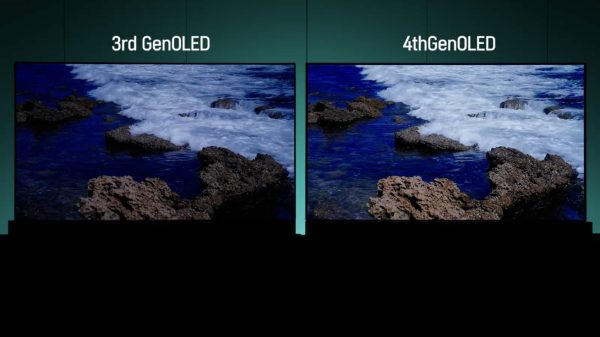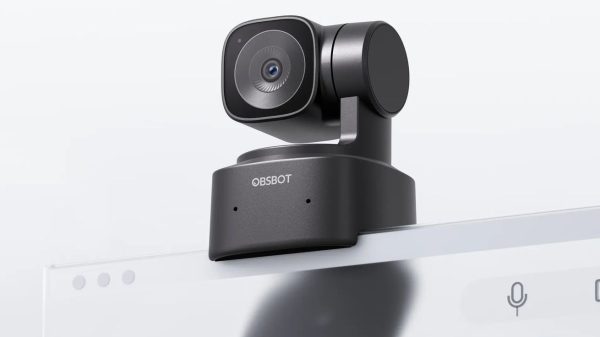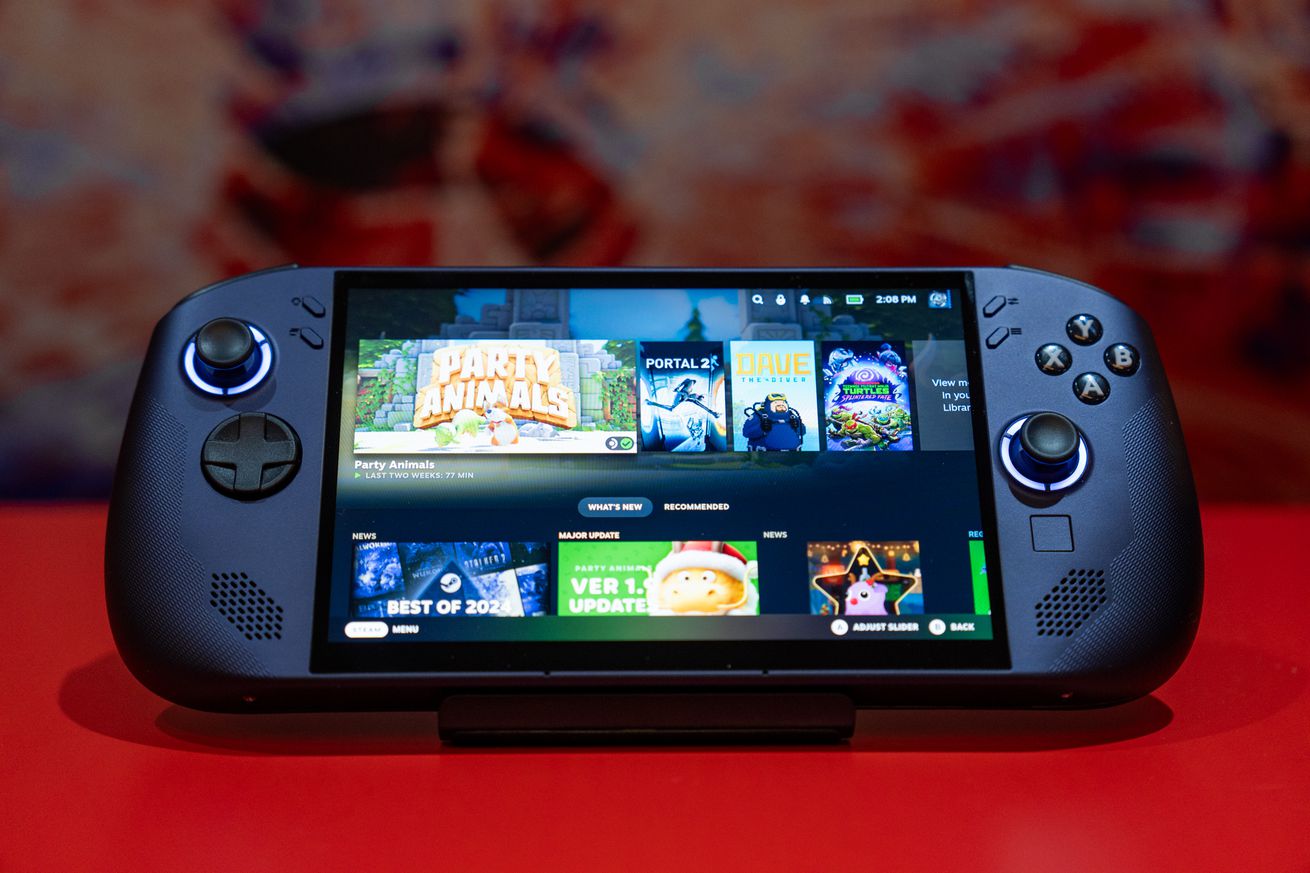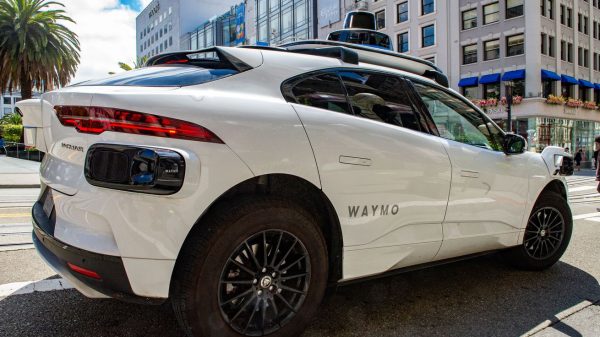
Lenovo is trying an experiment. In May, it will officially become the very first company outside of Valve to ship a handheld gaming PC with the Steam Deck’s wonderfully pick-up-and-play SteamOS instead of Microsoft Windows. And at $499, it’ll be a true Steam Deck rival, joining it as one of the lower-priced PC handhelds you can buy.
That handheld will be the 1.6-pound Lenovo Legion Go S, a new and improved version of the company’s eight-inch handheld that ditches the Nintendo Switch-like detachable gamepads and kickstand for a lighter and more traditional design, with a sculpted grip that felt supremely comfortable in my hands.
It’ll also be one of the few handhelds on the market to offer a 120Hz variable refresh rate screen — a highly desirable feature that lets low-power handheld gameplay feel smooth, even if it’s not generating lots of frames. That screen will be lower in resolution at 1920 x 1200, too, and feature a hopefully power-sipping new AMD Ryzen Z2 Go chip. (It’s a Lenovo-exclusive chip, by the way.)
In other words, it might address every major complaint I had in my Legion Go review, while additionally adding fun configurable RGB lighting around the joysticks, a slightly larger 55Wh battery, a pair of levers to reduce the throw of the triggers, and a less obtrusive touchpad, too, while retaining the dual USB 4 ports.
But Lenovo isn’t going all in on SteamOS. Not only will it hedge its bets by shipping a Windows version of the Legion Go S as well but it’ll also ship with Windows this month — four months ahead of the SteamOS models. The Windows model is white:
It’s not like the SteamOS model is ready now anyhow. Valve codesigners Lawrence Yang and Pierre-Loup Griffais tell me they’ve only been working with Lenovo for a couple of months, and the integration isn’t quite done. The new touchpad, gyroscope, and both RGB lighting and TDP configuration options are among the things on their to-do list.
But the Windows version shipping in January will cost $729.99, with 32GB of RAM and 1TB of storage. In May, the true experiment will begin when gamers can pick between a $499.99 SteamOS version with 16GB / 512GB, a $599.99 Windows version with 16GB / 1TB, or the Steam Deck and Steam Deck OLED at $399 and $549, respectively.
And it does sound like there will be one important reason to pick the Steam Deck over the Legion Go S and vice versa, because AMD’s Z2 Go is a different chip. While the Z2 Go announced yesterday sheds cores and GPU generations to be slightly more akin to the Steam Deck’s semi-custom Aerith and / or Sephiroth parts, we noted that it targets higher power levels, and Legion Go product manager Alex Zhu confirms to me that the Legion Go S is aimed at 20-watt performance, 30-watt, maybe even 40-watt configurable performance, which will likely offer higher performance (and lower battery life) than the 15-watt-and-below Steam Deck’s chip.
Zhu says Lenovo is targeting between two and 2.5 hours of battery life in demanding heavy games — which lines up with the basic math of dividing a 55 watt-hour battery by 20 watts, assuming the rest of the system doesn’t eat up a lot more. Versions with AMD’s existing Z1 Extreme chip will also be available in some markets. All Legion Go S can fit full-length M.2 2280 solid state drives.
BTW, Valve isn’t keeping key Steam Deck features like precompiled shaders to itself, or anything else, for that matter. Yang and Griffais say it will be one SteamOS, and the Legion Go S and any future SteamOS devices will get the same updates as the Deck, minus hardware-specific tweaks.
Valve tells me Lenovo is currently its only partner for a SteamOS device — there are no other third-party SteamOS devices currently in the works. But Griffais hints that Valve is close to publicly releasing a new beta of its SteamOS that just might possibly start working on other handhelds as well. (Valve previously confirmed to us that it was building toward some level of support for the Asus ROG Ally in SteamOS as well.)
And it’s vaguely possible that SteamOS beta could arrive before the SteamOS Legion Go S — Valve says it’s slated to ship sometime after March.
But the real dream is to pull a PC handheld out of a box and have it just work, the way a Nintendo Switch works, not to shoehorn an operating system on it afterward, no matter how good the result. That’s why Lenovo is working with Valve: Zhu agrees that SteamOS has the best out-of-box experience. But, he says, Windows offers a whole ecosystem of gaming and productivity that the company believes its customers still want.
Zhu agrees that SteamOS is an experiment for Lenovo and says it’ll look at the feedback and momentum before making its next move. Speaking of what’s next, Lenovo is also building a larger Legion Go 2 with detachable controllers and an 8.8-inch OLED screen, and it brought prototypes of that unit to CES:
/cdn.vox-cdn.com/uploads/chorus_asset/file/25820479/247466_CES_2025_Lenovo_Legion_Go_OLED_prototype_ADiBenedetto_0005.jpg)
Photo by Antonio G. Di Benedetto / The Verge
/cdn.vox-cdn.com/uploads/chorus_asset/file/25820477/247466_CES_2025_Lenovo_Legion_Go_OLED_prototype_ADiBenedetto_0003.jpg)
Photo by Antonio G. Di Benedetto / The Verge
Zhu tells me Lenovo doesn’t have “any specific plans” to put SteamOS on the larger Legion Go, just Windows — but perhaps it depends on what customers buy in May.
Meanwhile, Valve is still looking ahead to a future version of its own Steam Deck, saying that partnering with companies like Lenovo hasn’t reduced the desire to build its own. But AMD’s Z2 isn’t the “leap” that Valve’s been waiting for, Griffais tells The Verge. There won’t be a Z2 Steam Deck.
























